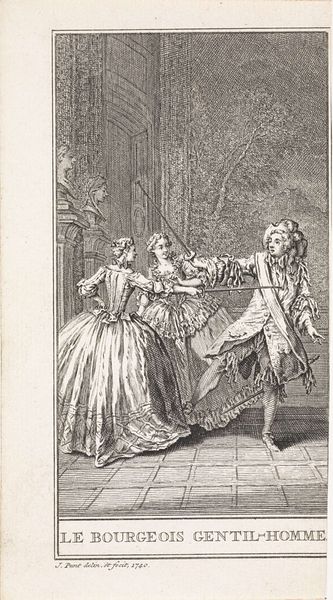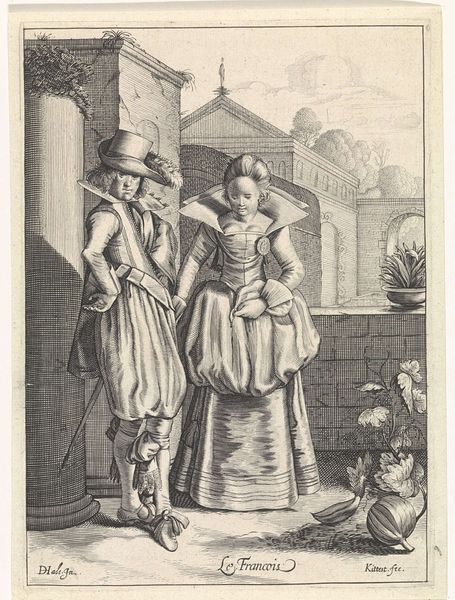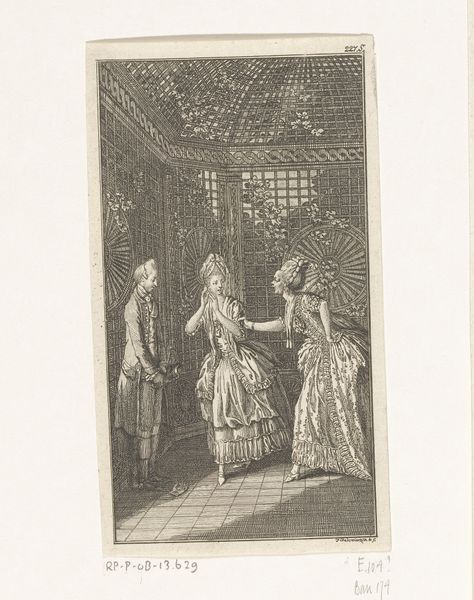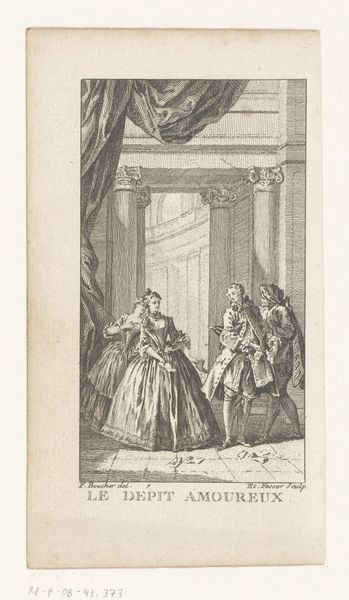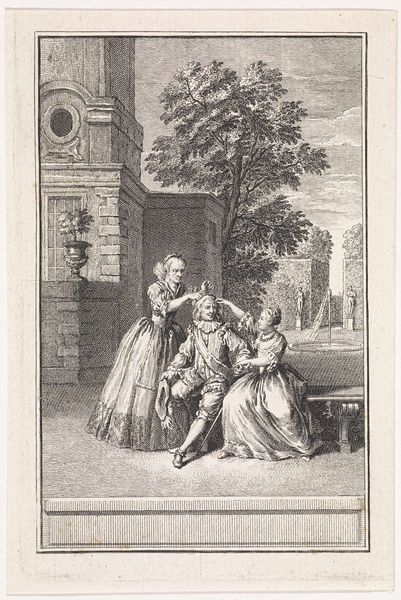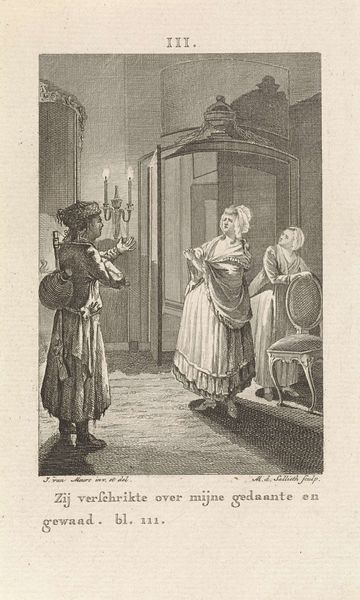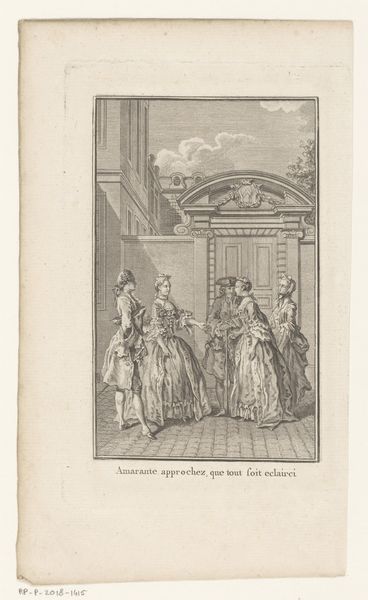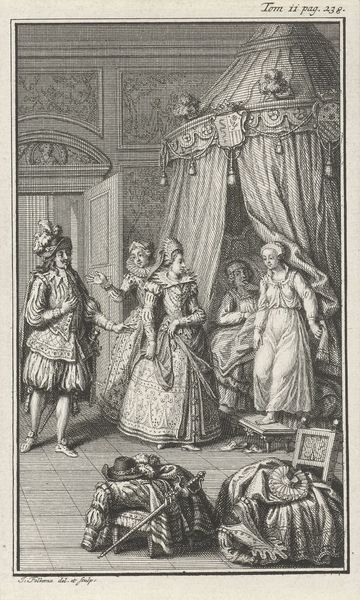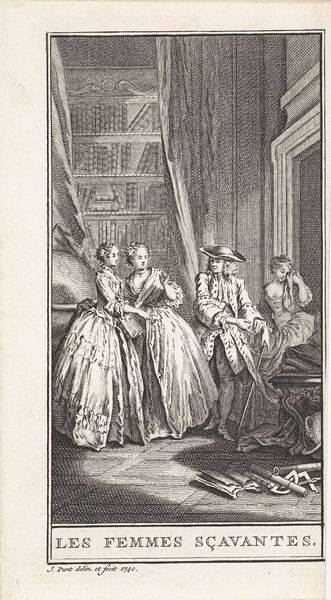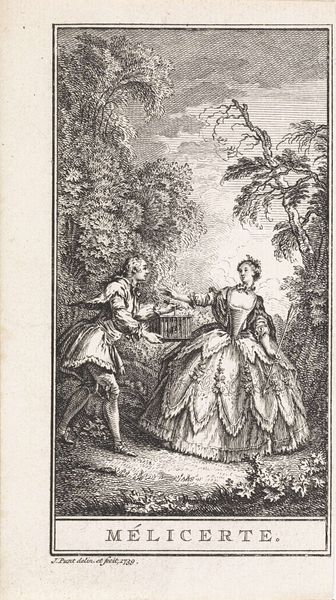
Gulliver Presented to the Queen of Babilary, Frontispiece to "The Travels of Mr. John Gulliver" 1730
0:00
0:00
drawing, print, engraving
#
drawing
#
narrative-art
# print
#
figuration
#
line
#
history-painting
#
engraving
Dimensions: sheet: 5 1/2 x 2 13/16 in. (13.9 x 7.1 cm)
Copyright: Public Domain
Curator: My eyes are immediately drawn to the stark, almost clinical detail. There's a detachment in the lines, even as it depicts this rather fantastical scene. Editor: Indeed. Here we have Gerard Vandergucht's engraving from 1730, titled "Gulliver Presented to the Queen of Babilary." It's a frontispiece meant for "The Travels of Mr. John Gulliver", now held at the Metropolitan Museum. The perspective feels quite unusual. Curator: Unusual is putting it mildly. It feels theatrical, almost stage-like. The architecture—those oversized columns—the heavy drape… And look at Gulliver. He's miniature, but presented so stiffly. Is that supposed to be admiration on his face, or just utter bewilderment? He’s really selling the fish-out-of-water thing, isn't he? I mean, who wouldn't be disoriented, stepping into a world that's essentially an elaborate game of forced perspective? Editor: Consider the lines themselves—they don't just define forms but create mood, the texture on the Queen’s dress against Gulliver's relative lack of detail emphasizing size disparity, suggesting that Hogarth intended a clear distinction between realms. And there is an implicit suggestion on how hierarchy is projected through physical space. I agree the stage metaphor helps, but perhaps not as a place for drama but for structural commentary. Curator: Oh, always with the structure. But alright, fair enough. This meticulous cross-hatching emphasizes just how trapped poor Gulliver must feel, dwarfed by both the Queen and the architecture. Almost like he's caught in the web of societal constructs and expectations—all spun out of lines and angles! Editor: Perhaps trapped, perhaps highlighted. Consider it semiotically, not existentially. The point is the composition uses depth of field that communicates in no uncertain terms, that scale represents both power and cultural difference—ideas quite prominent at that time. We are observers, just as Gulliver is observed. Curator: Hmm, fair. It's that starkness, though, that keeps me hooked. No fuzzy edges, no softening. Just this blunt portrayal of absurdity, meticulously etched in lines. Vandergucht just puts you right there, uncomfortably front and center, and makes you consider scale in all its wonky, powerful glory. Editor: Exactly. And so ends the lesson on the relationship between space, scale and social order.
Comments
No comments
Be the first to comment and join the conversation on the ultimate creative platform.
